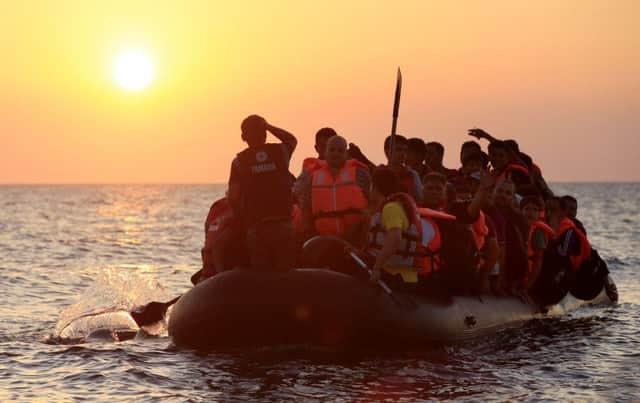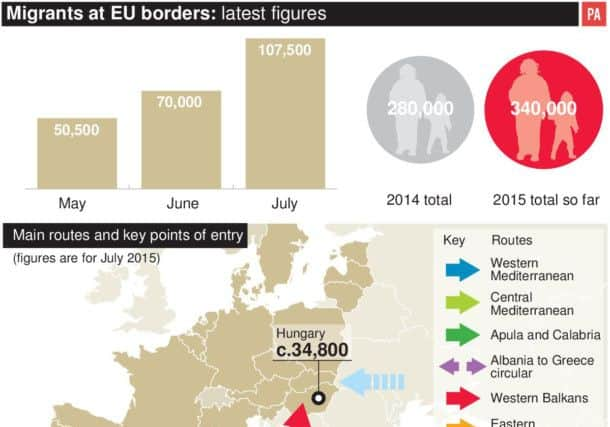Q&A on the migrant crisis facing Britain today - infographic


• What has led to the crisis in Europe?
An unprecedented surge in migrants arriving from the Middle East and North Africa. Conflicts in Afghanistan and Syria, as well as a repressive regime in Eritrea, are seen as major factors in what charities have described as the worst refugee crisis since the Second World War. Ministers in the UK have claimed that a large proportion of the people arriving are “economic” migrants searching for work rather than fleeing persecution. Whatever the reasons for the influx, a number of countries have come under strain - including Greece, Italy and Hungary.
READ MORE...


• How many people are arriving?
The EU’s border agency Frontex said the number of migrants detected at EU borders in January to July stood at nearly 340,000. This was almost three times higher than the 123,500 recorded in the same period last year, and already higher than the 280,000 detected in the whole of 2014. The true scale is likely to be higher as the figures do not include those passing into the continent undetected.
• How many people have died trying to reach Europe?
Advertisement
Hide AdAdvertisement
Hide AdThe latest estimates suggest there have been more than 2,600 fatalities as migrants attempt to cross the Mediterranean, often in rickety, overcrowded boats.
• Where do they come from?
Syrians, Afghans and Eritreans are generally seen as making up the lion’s share of the arrivals.
• What routes do they take?
The three most common routes are known as the eastern Mediterranean, western Balkans or central Mediterranean, with 132,000, 102,000 and 91,000 illegal border crossings respectively in the first seven months of the year.
• Where do they go next?
Germany receives by far the most asylum applications in the EU, and is expecting an extraordinary 800,000 refugees to arrive this year.
Advertisement
Hide AdAdvertisement
Hide AdIn July, the most detections were reported in the Aegean Sea, with nearly 50,000, mainly on the Greek islands of Lesbos, Chios, Samos and Kos. Italy received more than 20,000 migrants in the month. In the western Balkans, Hungarian authorities detected more than 34,000 arrivals.
• What about the UK?
The Government has faced pressure to take in more refugees. Estimated figures show that Britain had the seventh highest number of asylum applications within the EU in the year to June, with 33,000 including dependents. Germany had almost eight times as many, with 259,000, followed by Hungary (93,000) and Sweden (78,000). Last year, the proportion of positive asylum decisions in Germany was 42%, compared with 39% in the UK. The UK accepted 217 asylum seekers per million of population.
• Where do asylum seekers in the UK come from?
In the year to June, the largest number of applications came from Eritrea (3,568), followed by Pakistan (2,302) and Syria (2,204).
• What is the difference between asylum seekers and refugees?
Advertisement
Hide AdAdvertisement
Hide AdAn asylum seeker is someone who is waiting for a decision on whether authorities determine that they are a refugee. A refugee is someone forced to flee their country because of persecution, war or violence and who has a fear of persecution or death if they return.